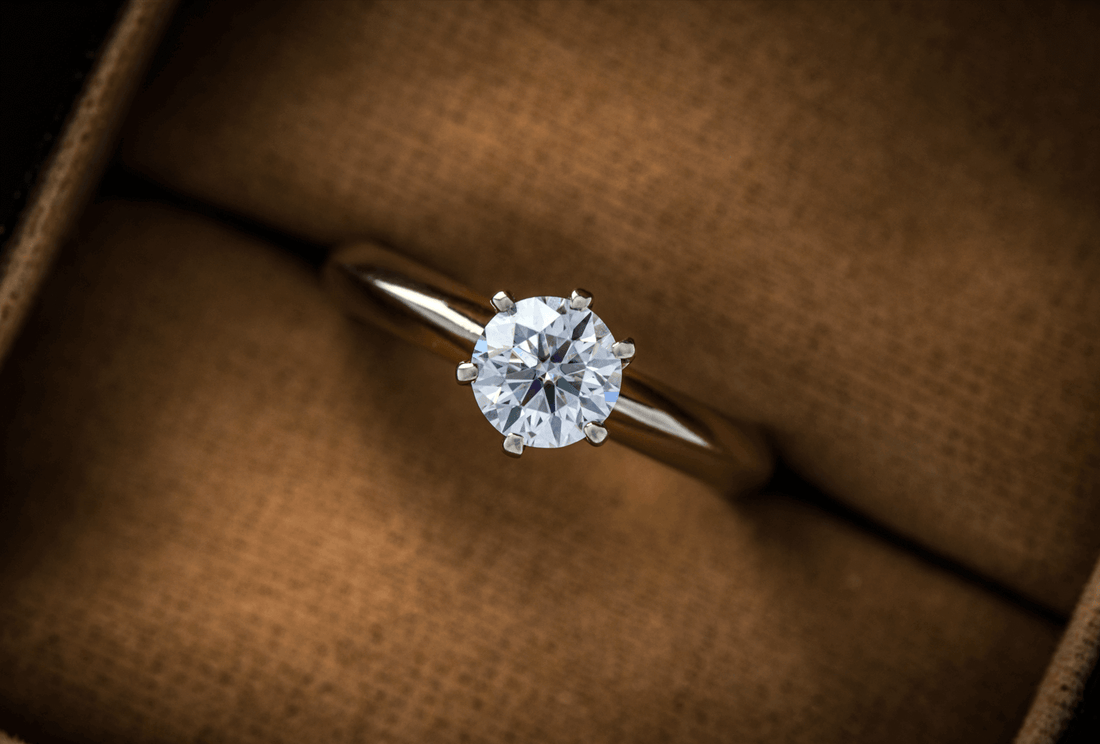When it comes to the hallmark sparkle of a diamond, there are three optical properties at play: brilliance, scintillation, and fire. These three traits come together to create the sparkle and life we associate with a quality stone.
Understanding each one is key to helping you choose a diamond that you will cherish for years to come.
In this guide, we’ll break down each quality, explain how they interact, and share what to look for when comparing diamonds side by side.
What Is Brilliance?
Brilliance is the bright white light that you see when looking straight into a diamond; that is, the total amount of white light that reflects back to your eye. It’s the result of light entering through the top of the diamond (the table), bouncing around its internal facets, and then returning to you.
When a diamond has strong brilliance, it appears lively - even in less than optimal lighting situations.
Know that brilliance isn’t really about how “white” the diamond is (diamond color), it’s about how effectively it returns light. A diamond with high brilliance will seem to almost glow from within, while a diamond with poor brilliance may look dull or flat, even if it has excellent color and clarity.
What Is Fire?
Fire is the rainbow of colors you see when light passes through a diamond and separates into different wavelengths.
These different colors of light seen —reds, blues, greens, and yellows—occur as the light bends and disperses inside the stone before reaching your eye. This is the same phenomenon that you’ve likely seen in science class, with white light being broken down into colored wavelengths when going through a prism.
When it comes to seeing fire, you’ll notice the property most in spot lighting or direct sunlight - where there’s actually enough white light present that can be broken down into its constituent colours.
Under these conditions, a diamond can display tiny, sharp flashes or broader, softer bursts of color, depending on its proportions and facet arrangement.
Whereas brilliance deals with white light, fire deals with the colors. It adds a sense of depth and dimension to a diamond’s appearance
What Is Scintillation?
Scintillation is the sparkle you see when looking at a diamond during movement. It’s the mix of light and dark patterns that sparkle and dance as the stone is tilted or rotated, or as you walk by and look at the stone. There are two parts to this, flash scintillation and fire scintillation.
Flash scintillation is the quick burst of light patterns, and darkness, seen when a diamond is viewed in movement. Fire scintillation is the same, but with colored light.
A diamond with an even, edge-to-edge sparkle will have good scintillation. Poorly cut stones can have flat spots where little light reflects, making them look dull in certain areas.
What Impacts Brilliance, Scintillation, and Fire?
The 4Cs are the pillars used to judge a diamond’s quality. That being said, when it comes to light performance, a diamond’s cut has the most influence on its appearance.
It’s the way that a diamond’s facets are shaped and arranged that determines how well a diamond reflects white light (brilliance), shows flashes of color (fire), and sparkles when it moves (scintillation).
Color affects how white or warm a diamond looks, and clarity shows how free it is from inclusions, but neither changes how light moves through the stone . Carat is simply a measurement of weight, so it doesn’t impact sparkle at all.
A diamond with a great cut can look bright, colorful, and lively—even if it has slightly lower color or clarity grades. On the other hand, a poorly cut diamond can appear dull no matter how high it scores in the other Cs.
If sparkle is what you’re after, focus on cut first. It’s the part of the 4Cs that makes the biggest difference in how a diamond actually looks in person.
Seeing It for Yourself
While grading reports—especially for round diamonds—can give you a helpful starting point, nothing compares to seeing a diamond in person.
Viewing it firsthand lets you see how brilliance, fire, and scintillation come together, and how they change in different settings.
The next time you’re looking at a stone, it’s important to keep a few things in mind.
Check the diamond under multiple lighting conditions—overhead, spotlight, and natural light—to see how it performs.
Compare it side by side with other stones to spot differences in brightness, color flashes, and overall sparkle.
Also, look for consistent sparkle and brightness across the whole diamond, not just in the center. This matters even more with fancy shapes like oval, pear, and cushion cuts, since they don’t have an official cut grade. For these shapes, seeing them in person—and getting guidance from a trusted jeweler—is the best way to judge their overall beauty.
At Paul’s Jewelers, we’ve been helping clients in Milwaukee and beyond choose the diamonds for over 55 years.
With GIA gemologists on staff, our team can walk you through the diamond selection process. We can showcase the nuances between the 4cs and brilliance, scintillation, and fire, so you exactly how each stone handles light so you can feel confident in your choice.
Whether you’re selecting an engagement ring, pendant, or looking to create your very own custom jewelry masterpiece, we’ll help you find a diamond that shines from every angle.
Stop by our showroom and see why we’ve been Milwaukee’s trusted jeweler for more than five decades.


